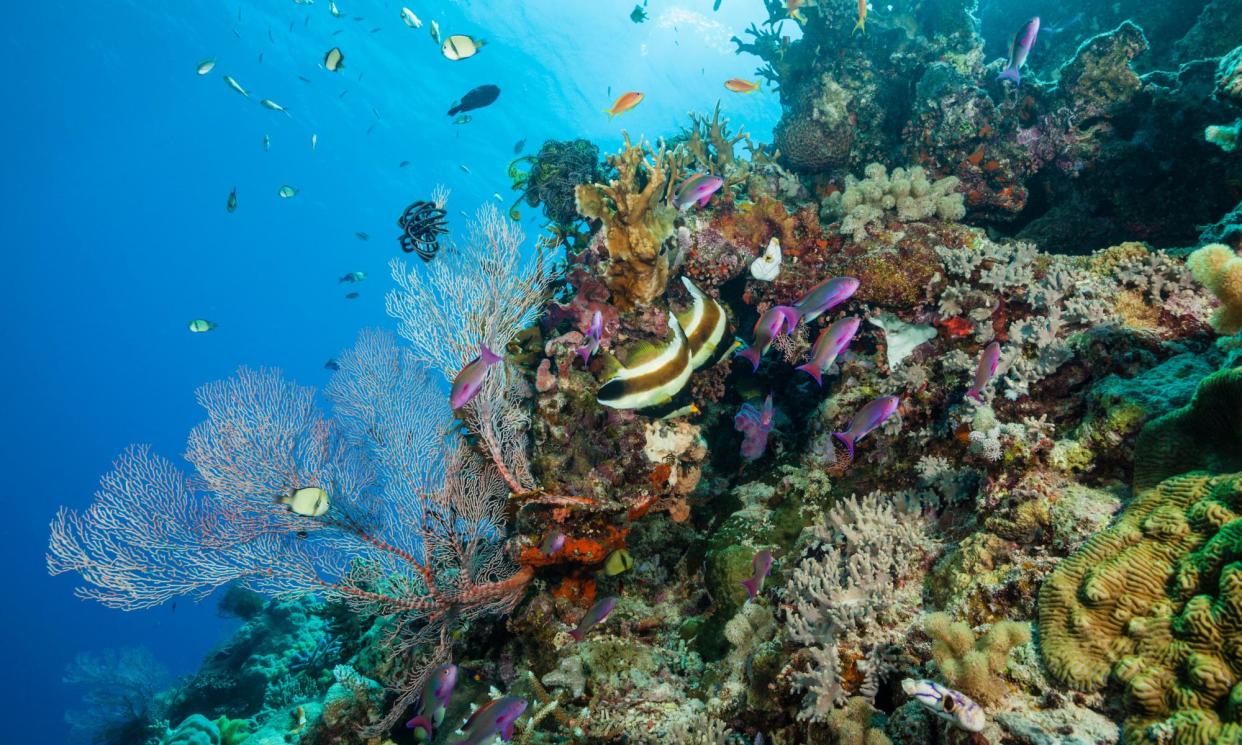Race is on to produce a super-coral to survive world’s warming seas

It is one of the least understood processes in nature. How do two very different species learn to live with each other and create a bond, known as symbiosis, which can give them a powerful evolutionary advantage?
Coral reefs are the most spectacular manifestations of symbiosis – and understanding the mechanics of this mutual endeavour has become an urgent task as global warming has triggered the widespread collapse of reefs across the planet.
In a bid to halt this destruction, an international group of researchers led by the Wellcome Sanger Institute is working together on the Aquatic Symbiosis Genomics (ASG) project. Powerful DNA sequencers are now unravelling the genetic secrets of coral, data that could be vital in saving the world’s reefs, and understanding the mysterious processes that drive symbiosis.
“Coral reefs are called the rainforests of the seas for a good reason,” said Michael Sweet, of the University of Derby, and leader of the project. “They provide homes for a vast array of sealife and have an estimated global worth of around £6tn a year because of the fishing, tourism industries and coastal protection they support.”
However, widespread bleaching of reefs from global warming is now causing worldwide devastation. Sometimes a reef recovers but as bleaching events become increasingly frequent, they lose their ability to bounce back to good health. Some of the worst affected sites include the Great Barrier Reef in Australia.
The US National Oceanic and Atmospheric Administration’s Coral Reef Watch revealed this year that 54% of oceans containing reefs had experienced heat stress high enough to cause destructive bleaching.
“At the current rate of bleaching, about 90% of the world’s coral reefs will be functionally extinct by 2030 and will no longer be able to support life,” added Sweet. “It is extremely worrying.”
Understanding the exact relationship between coral and its symbiotic partner, algae, is now a key focus of scientific attention. Coral provides protection for algae, which in turn converts the sun’s energy into food for the coral. This gives the coral the energy to grow, reproduce, and build its skeleton. The algae also give coral its colour.
“However, there is a great deal that we still do not know about symbiosis,” said Mark Blaxter, another research leader at the Wellcome Sanger Institute. “What happens to species when they go into symbiosis, what changes inside them and makes them different, and how do the two species collaborate?
“These are crucial questions that we need to answer quickly otherwise coral reefs are going to be destroyed in less than a decade.”
As part of the ASG project, which is funded by the Gordon and Betty Moore Foundation and the Sanger Institute,, thousands of samples of coral DNA are now being studied and their genomes sequenced. A key goal will be to pinpoint symbiotic partners that make coral best able to resist the impact of rising sea temperatures as well as diseases that are associated with increased heat.
However, to sequence coral genomes, project scientists have had to develop new methods for extracting DNA from their stony skeletons and also for separating the genome of the coral animal from the symbiotic algae. In doing so, they have already made several crucial discoveries. For example, some common coral species collected by the team turn out to be made up of several distinct species.
“This is important,” added Sweet. “It means that some widespread corals thought not to be ‘at risk’ may be made up of local species, each of which could be vulnerable to climate change in different ways. This is the kind of data we need to collect.”
In addition, scientists have discovered that although the coral animal is the major partner in the symbiosis, the genomes of the algae often turn out to be twice the size of those of coral. This complexity probably reflects the difficulty involved in turning the sun’s energy into sugars to feed the whole coral partnership.
Once a coral with a promising genome is isolated, scientists hope they will then be able to breed colonies from a sample, or use gene-editing to manipulate the DNA of a different type of coral – one that grows quickly, for example – so that it acquires a desired characteristic such as thermal tolerance or disease resistance.
“In this way, you can combine sets of characteristics so you can create a type of super-coral,” said Sweet.


